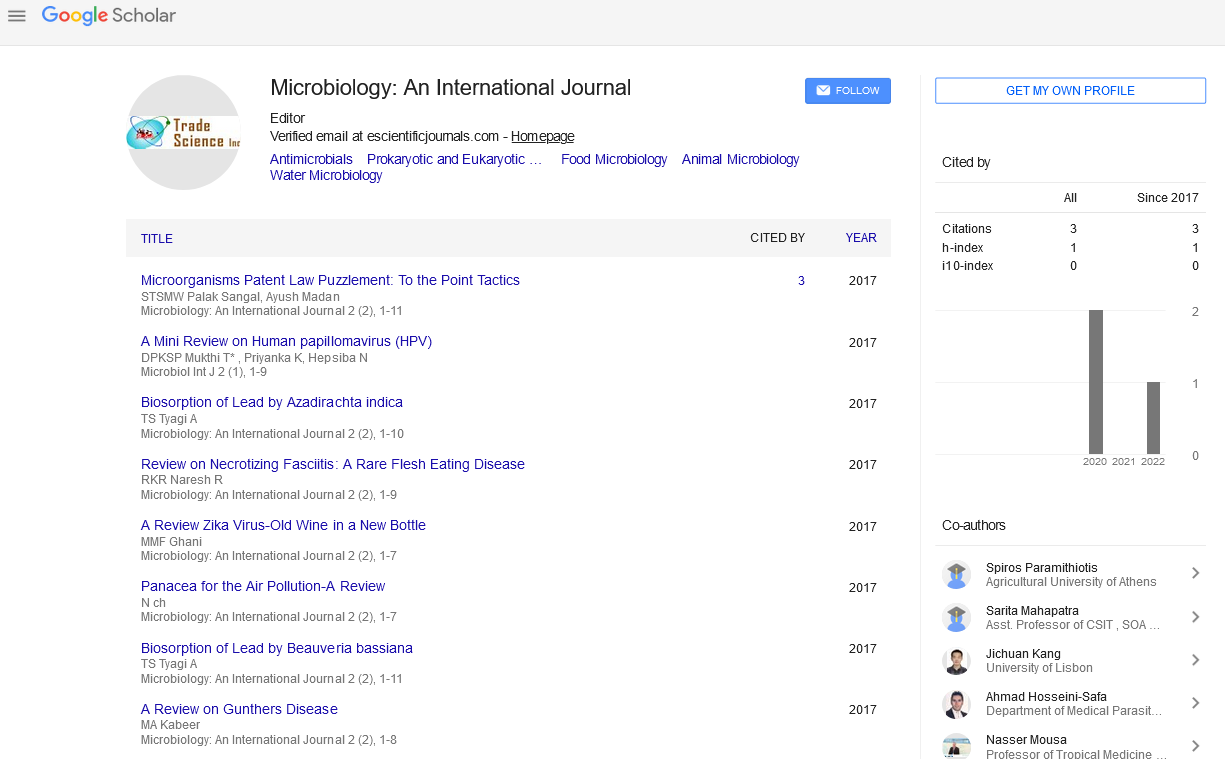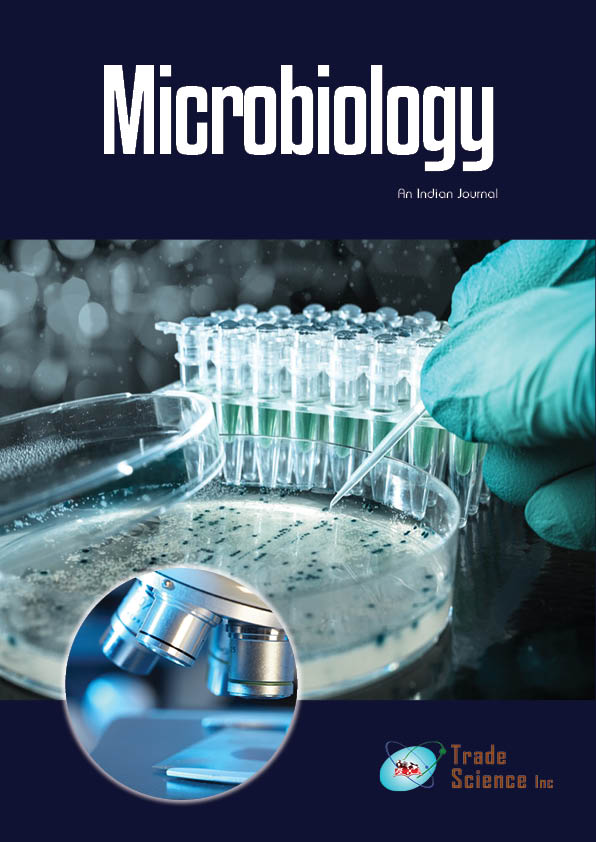Current opinion
, Volume: 3( 1) DOI: 10.37532/tsmy.2021.3(1).114Respiratory Infections and Inhalation Monoclonal Antibody Therapy
- *Correspondence:
- Hassan AA, National Cancer Institute, Cairo University, Cairo, Egypt; E-mail: hassan82@gmail.com
Received: July 25, 2021; Accepted: August 10, 2021; Published: August 16, 2021
Citation: AA Hassan. Respiratory Infections And Inhalation Monoclonal Antibody Therapy. Microbiol Int J. 3(1):122.
Abstract
With over 50 authorised medications and over 500 monoclonal antibody (mAb)-based therapies in clinical development, therapeutic antibodies have emerged as one of the most significant therapeutic modalities. mAbs are natural macromolecules that bind to a wide range of antigenic sites with high affinity and specificity using distinct pharmacokinetic (PK) and pharmacodynamic (PD) properties.
Perspective
Therapeutic antibodies have emerged as one of the most important therapeutic modalities, with over 50 approved medicines and over 500 monoclonal antibody (mAb)-based treatments under clinical development [1]. mAbs are natural macromolecules that use unique pharmacokinetic (PK) and pharmacodynamic (PD) characteristics to bind to a wide range of antigenic sites with high affinity and specificity. More than 90% of the newly approved biologics were mAb-based medicines [2]. When compared to traditional small-molecule medicines, mAbs rising success can be due to their superior safety, target specificity, and pharmacokinetics. Because there is no chance of the given antibodies being metabolised in vivo into harmful metabolites, the likelihood of therapeutic phase transition is quite high when compared to small molecule medicines. Antibody-based treatments have improved autoimmune disorders, cancer biotherapies, and patient survival rates while also reducing adverse effects. In the case of viral targets, however, there has been minimal success. Immunotherapy has been proposed as a possible intervention to reduce viral transmission and illness severity in recent years. Several mAbs have been isolated from various sources using various strategies for therapeutics or preventive approaches against infectious viral diseases such as human cytomegalovirus, influenza, human immunodeficiency virus, respiratory syncytial virus, SARS-CoV-2, Ebola, Zika, rabies, HBV, and dengue fever. Palivizumab has been approved for the prevention of respiratory syncytial virus (RSV) infection in high-risk children [3], and ibalizumab has been approved for the treatment of HIV-infected individuals who have developed multidrug antiretroviral therapy (ART) resistance [4]. Inmazeb (atoltivimab, maftivimab, and odesivimab-ebgn), a combination of three monoclonal antibodies, was recently approved by the FDA as the first FDA-approved treatment for adult and paediatric Zaire ebolavirus (Ebola virus) infection, paving the way for more therapeutic mAbs to be developed for other viral infections [5]. Although certain applications prefer aerosol or subcutaneous administration, most therapeutic mAbs are given intravenously (IV) or through a systemic passive immunisation approach. One possible disadvantage of the systemic method is the restricted absorption of mAbs from the site of injection to infected organs via blood circulation, which influences and restricts therapeutic target access overall. Respiratory problems (induced by viral and non-viral agents, for example) predominantly damage respiratory organs, reducing therapeutic mAb absorption by the sys. However, researchers are looking at other methods for administering therapeutic mAbs to respiratory organs, and one such option might be utilising mAbs via the inhaled route, which would circumvent this restriction. Passive antibody delivery through inhalation can provide protective doses of antibodies to the vulnerable mucosal surface, which is the major route of infection entrance, instantly and directly. Because it is typically faster (within minutes to hours) than other routes of administration (days), inhalation may allow a faster start of influence (within minutes to hours) on respiratory system organs. The creation of a new age of inhaled mAb-based public health intervention methods has been enabled by recent breakthroughs in mAb-based preventive tactics. Because most respiratory viral infections start on the mucosal surfaces of the upper respiratory tract, mucosal antibody administration is beneficial not just for protection but also for limiting virus transmission. Furthermore, antibodies can trap viruses on the mucous surface, inhibiting their mobility and limiting their spread into the environment, and the trapped viruses in the mucus can be removed from the body by regular mucous secretions.
Therapeutic biologicals delivered by inhalation may be more favourable, particularly in the event of respiratory problems or discomfort. Respiratory illnesses are a major public health concern across the world, with four of them ranking among the top 10 causes of mortality (pneumonia, TB, lung cancer, and chronic obstructive pulmonary disease) (COPD) [9]. They also pose a significant socioeconomic burden in terms of disability, medical expenditures, and lost productivity. Acute respiratory virus tract infections account for a significant portion of all human illnesses globally. Passive antibody-based immunisation methods, on the other hand, provide viable new tools. Antibodies administered prophylactically via intranasal or mucosal routes might be utilised as supportive treatment in the airways to prevent respiratory virus infections.
References
- 1. McGee DC. Maize Diseases: A Reference Source for Seed Technologists; The American Phytopatological Society: St. Paul, MN, USA, 1988.
- 2. Bensch MJ, van Staden J. Ultraestructural histopathology of infection and colonization of maize by Stenocarpella maydis (Diplodia maydis). J. Phytopathol. 1992;136:312-318.
- 3. Cutler HG, Crumley FG, Cox RH, et al. Diplodiol: A new toxin from Diplodia macrospora. J Agric Food Chem. 1980;28:135-138.
- 4. Blaney BJ, Mannion PE, Tuder GD, et al. Examination of Diplodia maydis infected maize for toxicity to chicken and cattle. Aust Vet J. 1981;57:196-197.
- 5. Kellerman TS, Rabie CJ, van Der Westhuizen, et al. Induction of diplodiosis: A neuromyco-toxicosis in domestic ruminants with cultures of indigenous and exotic isolates of Diplodia maydis. Ondersteport J Vet Res. 1985;52:35-42.

